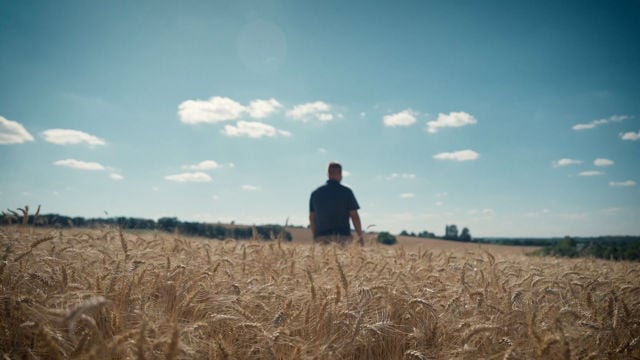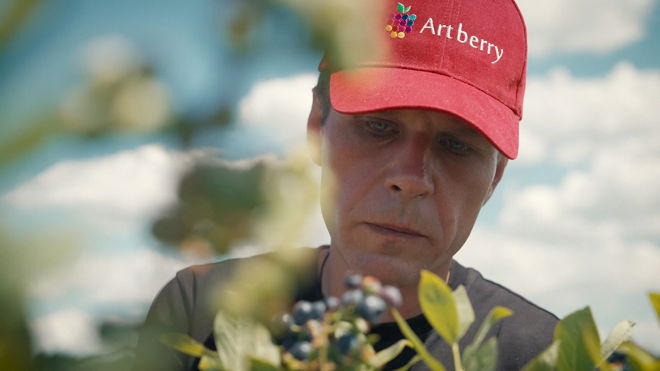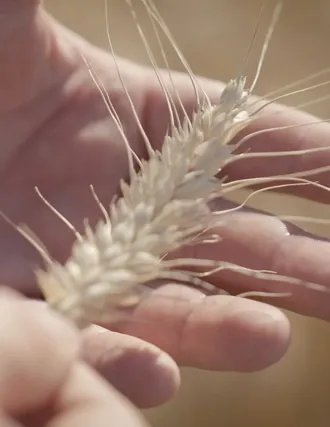Resilience in the fields: Ukrainian farmers reclaim their land

After suffering heavy destruction during Russia’s full-scale invasion, Ukrainian farmers are making a comeback. The town of Bucha, once left in ruins by Russian occupation, has become a symbol of resilience. With the help of targeted loan programmes, farmers are rebuilding Ukraine’s agricultural sector.
"Everything changed overnight. We had never experienced anything like it," says Oleksii Stepanenko, who runs Artberry farm near the small town of Bucha in the Kyiv region. The area witnessed some of the invasion’s worst atrocities and was heavily damaged.
Oleksii has since resumed cultivating blueberries and cherries. He has also hired internally displaced people from cities such as Mariupol, Kharkiv, and Donetsk.
”When a person flees a home without money and any support, we understand this and try to give them a job,” Oleksii says.
The recovery was made possible through ARISE – a loan programme established by the World Bank and the Ukrainian government. ARISE is supported by Norwegian funding.

Oleksii Stepanenko runs the Artberry farm near the city of Bucha, Ukraine.
A devastated sector
Agriculture is the main source of income for one-third of Ukraine’s population. Over the last 15 years, Ukraine became a major global exporter of wheat, maize, barley, and oilseeds, with key markets in Asia, Africa, and the Middle East.
That changed with Russia’s full-scale invasion in February 2022.
The war disrupted supply chains, blocked major export routes through the Black Sea, and sent fuel prices soaring. Farms were attacked, storage facilities and equipment destroyed, and production costs nearly doubled between 2022 and 2023.

By the end of 2023, total damages to Ukraine’s agriculture sector were estimated at $10.3 billion. The overall economic loss – including reduced income and increased costs – reached nearly $70 billion
Critical support for over 10,000 farmers
Before the war, most Ukrainian farmers relied on supplier credit and their own savings. When the war began, these sources dried up and many farms faced financial collapse.
"The loan programme has been vital for us. Today, we export 80 percent of our berries to the UK, the Netherlands, and Spain – something that would have been impossible without this support," says Oleksii.
The Agricultural Recovery Emergency Support Project (ARISE) was launched to keep production going and ensure food security – both in Ukraine and globally. Norway supports ARISE through the Ukraine Relief, Recovery, Reconstruction and Reform Trust Fund (URTF), where it is the largest contributor, with NOK 6.6 billion in funding.
Through the state-run “5-7-9” programme – where interest rates are subsidised by the Ukrainian government – around 10,000 farmers have now gained access to affordable loans to keep their farms running.
Adapting through innovation
Another example can be found at Ustyanske farm in the Vinnytsia region, where Pavlo Marushchak grows grains and oilseeds. The farm has been in his family for generations. The war brought steep increases in production costs and forced the farm to use more expensive export routes.
"The programme helped us avoid bankruptcy. We were able to buy new precision seeding equipment that saves fuel, fertiliser, and water. That’s what allows us to keep producing," says Pavlo.

Pavlo Marushchak grows grain and oil crops in the Vinnytsia region.
The road ahead
So far, ARISE has mobilised USD 2 billion in private capital – exceeding the project’s original target. According to Irina Schuman, ARISE project lead at the World Bank, continued support is essential in the years ahead.
"We must ensure access to affordable loans for years to come so Ukrainian farmers can recover from the war’s devastation. This is crucial not only for Ukraine’s recovery but for global food security and long-term economic stability," says Schuman.
Through ARISE and URTF, Norway’s support is helping to sustain Ukrainian agriculture at a critical time – an investment in both Ukraine’s future and global food systems.
The results stories on the webpage of the Nansen Support Programme for Ukraine are based on texts produced and shared by the civilian and humanitarian partners of the programme. The stories represent a snapshot of the results achieved to showcase the difference the Norwegian support is making. Read more stories.